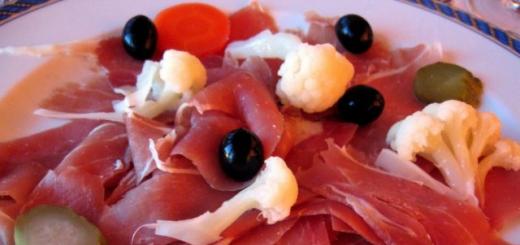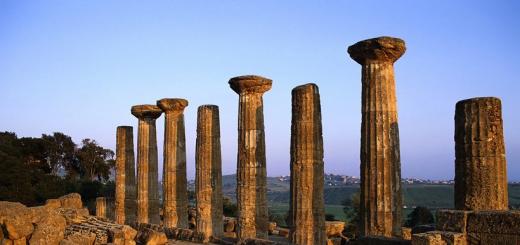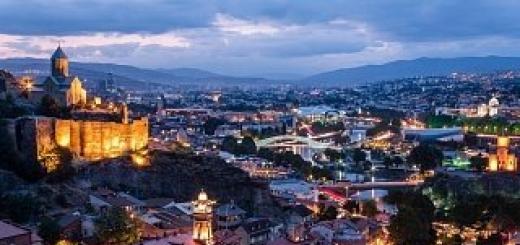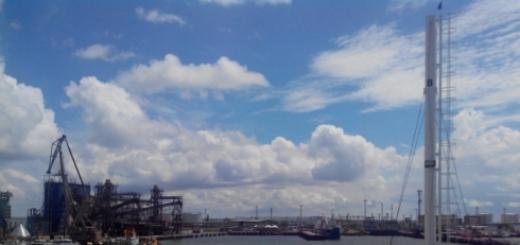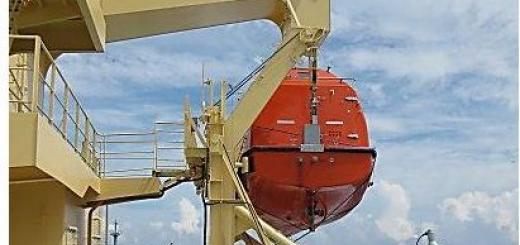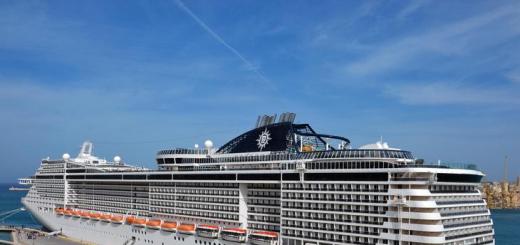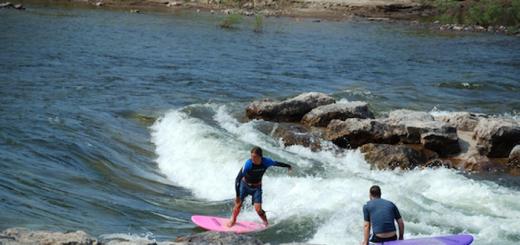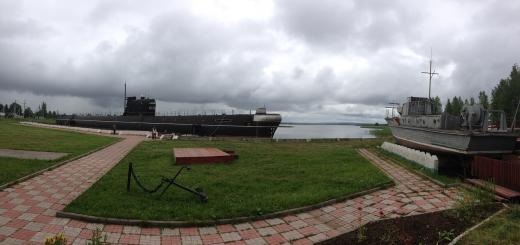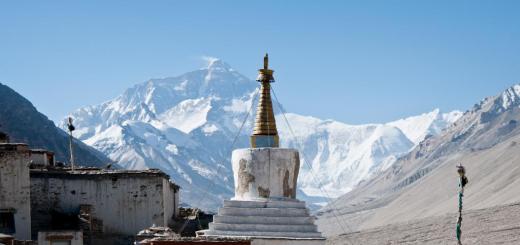In July 2015, writer and photographer K. D. Leperi made a two-week cruise across Russia on the company's motor ship, from Moscow to St. Petersburg. In his blog, he showed how he saw his trip Viking River Cruises’ Waterways of the Tsars.
The journey begins in Moscow, but sends the ship on a cruise only on the 4th day: the first three days tourists get acquainted with the capital of Russia. These are excursions to the Kremlin, the Armory, the Pushkin Museum, the Moscow metro, to a concert of Russian folk music with Cossack dances and a night walk around the city. Particularly impressive was the visit to the Bolshoi Theater - to see the famous "Swan Lake". Optional excursions are also available. As the author writes, he chose a trip to Star City and a submarine (museum) in Tushino.
Then the ship goes to St. Petersburg, making a stop at (), (Church of Elijah the Prophet, the Kremlin and the Governor's House), (excursion to), () and. Leperi notes that the route is optimal for getting to know Russian culture: “luxurious palaces and monasteries, whose iconic dome shapes play with a kaleidoscope of colors.” The highest wooden churches in the world, vodka with tea in the houses of local residents (apparently we are talking about such a type of excursion as visit local hous in Goritsy - approx. website), excursions to the Hermitage, the Catherine Palace. As Leperi writes, the most interesting place for him was the excursion to Kizhi, and the most boring - a master class on painting nesting dolls.
The comfortable ship Viking Ingvar also contributes to relaxation, the author continues. This is a “stylish, in a European look, liner, 423 feet long, refurbished in 2013-2014. 210 guests rest on it, and 115 people in the crew. On board you will find a restaurant with panoramic views, a lounge area and two bars, a library, a solarium with a shaded seating area, three outdoor promenade decks, a boutique shop and an elevator,” he writes.
“The ship on which we travel is named after Ingvar, the son of Rurik, the leader of the Vikings, who founded Russia. After his father's death, he was brought up by Helga's uncle, eventually succeeding in becoming the ruler of the Russian Empire,” continues Leperi.
Help site: ship operated by Viking River Cruises and registered to the Passenger Fleet LLC, flag of Russia, port of registry St. Petersburg. The ship was built according to and under the original name received in 1990 to the North-Western Shipping Company. Since the beginning of the 90s, the ship has been operating under flights with foreign tourists: initially from ICH, and since 1997 - from . The ship has had its current name since April 2012.
The boat is as comfortable on the inside as it is beautiful on the outside, notes Leperi. Cabins feature balconies overlooking the river, air conditioning, modern bathroom with separate shower and hairdryer. In the bath, a free set - shampoo, hair conditioner, shower gel, body lotion. Bathrobes and slippers are available upon request. Laundry services are available at an additional cost. In the cabins every day a free bottle of water.
Also in the cabin is a telephone for on-board communications, a personal safe, a mini-fridge, free Wi-Fi and a 26-inch Sony flat-screen TV with English-language satellite channels such as CNN, BBC.
The cabins are spacious and efficiently laid out, with spacious wardrobes and space under the bed to store your suitcase. I had a small cabin - 225 sq. feet (21 sq. m), and the largest were suites - 400 sq. m. feet (37 sqm). There were two places in the cabin and I lived with my friend, he writes. I would especially like to note that the glass doors separating the cabin from the balcony could be opened completely, enjoying the view of the river.
"Viking Ingvar"- a four-deck passenger river boat making 14-day voyages in Russia, departing from Moscow and St. Petersburg. The ship operator is the company, and the passenger contingent consists entirely of foreign tourists, since cruises on a ship are not sold in Russia.
The motor ship was built under the original name in 1990 in Germany, at a shipyard, in this series of 27 ships built by order of the USSR in the period from 1983 to 1991.
After commissioning, the ship entered the North-Western River Shipping Company and was assigned to Leningrad (St. Petersburg). Since the beginning of the 90s, the ship has been operating under flights with foreign tourists: initially from the ICH company, and since 1997 - from the company. The ship received its current name after modernization and re-equipment - in April 2012. The ship is named after Ingvar Khrerekson (Norman name of Igor Rurikovich) - the first ancient Russian prince, Grand Duke of Kyiv (875-945), son of Rurik.
The length of the ship is 129 m, the width is 16.7 m, the draft is 2.8 m. The displacement of the ship is 3800 tons, the ship has a speed of up to 25 km/h. The crew of the ship is 120 people. The ship operates under the flag of Russia and is assigned to St. Petersburg, the shipowner is Passenger Fleet LLC. The captain of the ship "Viking Ingvar" - Igor Stepanov.
The vessel can take on board 250 tourists, who can use a restaurant with an area of about 350 square meters. m. In the bow of the boat deck is equipped with an overview bar. In the forward part of the boat deck there is a viewing bar with an area of about 100 square meters. m.. On the tent deck there is a music salon with a bar with an area of about 150 square meters. m. and a large open deck with sun loungers and an awning. On the main deck there is a passenger check-in desk, with a seating area and a library. Passenger elevator connects all passenger decks of the ship.
On board the ship there are double single-tier cabins, most of which are equipped with balconies. Each cabin has a double bed, an individual bathroom with a separate shower, air conditioning, refrigerator, general ship phone and personal TV with satellite channels, free wi-fi in the cabins.
Meals on the ship 3 times a day, included in the price. Breakfast - buffet, there is an early coffee before breakfast. Lunch and dinner - by order. Complimentary wine, beer and soft drinks during lunch and dinner. Captain's cocktail on the first day of the cruise, and on the last evening of the cruise - Captain's dinner. The cuisine is international, American type, as well as traditional Russian dishes.
All port dues are included, but voluntary tips of up to $25 per day may be charged additionally for excursion and onboard services.
November 10th, 2016The saga of Ingvar the Traveler tells of the campaign of Ingvar and his squad to Gardarika (Rus) and further along the rivers south to Serkland (countries of the Caliphate) in 1040. Presumably, Ingvar's campaign ended in Transcaucasia, where he and almost his entire detachment died. The saga miraculously resonates with the chronicle Despite the fact that the date of Ingvar's campaign is later (about 1040), the result of the expedition almost completely coincides with the narration of Miskaveikh - almost all the participants and Ingvar himself die from illnesses, the Armenian chronicler Movses Kagankatvatsi, describing the campaign of the Rus to Berdaa , especially noted the pernicious role of local women who poisoned the Rus, as well as the Scandinavian creator of the saga.
Almost all the participants in Ingvar's campaign died in the Caliphate, but in Scandinavia memorial stones with runic inscriptions were installed for them. These are the so-called "Ingvar stones", some of the epitaphs from these stones I added to this post.
The birth of Ingvar and the adventures of his father Eymund
A few winters later, the king who was called Yaritsleiv (Yaroslav the Wise) and ruled Gard[ariki] (Rus) wooed Ingigerd. She was given to him, and she went with him to the east. When Eymund learned this news, he went there, to the east, and King Yaritsleif received him well, as well as Ingigerd and her people, since at that time there was a great non-peace in Gardariki due to the fact that Buritsleif, brother of King Yaritsleif, attacked state. Eimund fought 5 battles with him, but in the last one Buritsleif was captured and blinded and brought to the king. There he received great wealth in silver and gold, and various jewels and expensive objects.
The runic inscription "Serkland", as in Scandinavia they designated the lands of the Caliphate. 
Sö 131 Spioti, Halfdan, they set up this stone after Skardi, their brother. [He] left here to the east with Ingvar, in Serkland lies the son of Eyvind (translated by E. A. Melnikova). 
Eimund was in Holmgard (Novgorod), and fought many battles and won all of them, and won and returned to the king many lands that paid tribute. Then Eimund wanted to visit his possessions, and took a large and well-equipped army, because he had no shortage of either money or weapons. Here comes Eimund from Gardariki with great honor and popular respect, and now he comes to Svitjod (Sweden), and is established there in his state and possessions, and he immediately thought of marrying, and takes the daughter of a powerful man as his wife, and was born to him with her son, whose name is Ingvar.
Sö 179 (Gripsholm stone) Tola had this stone installed after her son Harald, Ingvar's brother. They bravely went far for gold and fed the eagles in the east. They died in the south in Serkland. 
Ingvar's first trip to the Baltic
At the time when the relatives - Onund and Ingvar - matured, the people called Semigallians (Latvians) were at enmity with King Olaf, and for some time they did not pay tribute. Then king Olaf Onund and Yngvar sent three ships to collect tribute. They came into the country and convene the inhabitants to the Thing, and there they collected tribute from their king. Ingvar showed the perfection of his eloquence, so that it seemed to the king and many other hevdings that there was no other solution than to pay the tribute that was demanded [from them], except for three hevdings who did not want to comply with the king’s decision, and refused to pay tribute, and collected army. When the king heard of their deed, he asked Onund and Ingvar to fight with them and gave them an army. They fought and many people died before they put the headings to flight. As they retreated, the one who resisted the most to pay tribute was captured, and they hanged him, but the other two fled. They took there a lot of good on account of war booty, and took away all the tribute, and they took it all to King Olaf, and brought him great wealth in gold and silver and jewelry.
U Fv1992;157 (Arlanda stone) Gunnar and Bjorn and Thorgrim erected this stone after Thorstein, their brother. He died in the east with Ingvar. And they made this bridge (per. E. A. Melnikova). 
Invar's stay in Russia
After some time, Ingvar sailed from Svitiod on 30 ships and did not lower the sails until they arrived in Gardariki; and King Yaritsleif received him with great honor. Ingvar stayed there for three winters and learned to speak many languages. He heard stories that three rivers flow from the east along Gardariki, and the largest was the one in the middle. Then Ingvar began to walk along Austrriki, and asked if any of the people knew where that river flows from, but no one could tell him this. Then Ingvar set out on his journey from Gardariki to go through and find out how long this river is. He gave the bishop the opportunity to consecrate the ax and flint for him.
U 654 Andvett and Kar and kiti and Blasie and Djärv erected this stone after Gunnleif, their father. He was killed in the east with Ingvar. God help their souls. I, Alrik (Askel?), carved the runes. He could navigate the ship well (translated by E. A. Melnikova). 
Ingvar and Greek fire
... Soon, one island swam up to them and brought down a hail of stones on them; but they covered themselves [with shields] and fired back. And when the Vikings met with strong resistance, they began to inflate with blacksmith bellows the furnace in which there was fire, and this caused a strong roar. There was a copper pipe there, and a big fire flew out of it at one ship, and it burned to the ground in a matter of minutes.
And when Ingvar saw this, he regretted his loss and ordered that tinder with consecrated fire be brought to him. Then he bent his bow, and placed an arrow on the string, and lit the end of the arrow with consecrated fire. And this arrow with fire flew from the bow into the chimney protruding above the furnace; and the fire spread to the pagans themselves and in the twinkling of an eye burned the island along with people and ships.
U 644 Andvett and kiti, and Kar, and Blasey, and Djärv, they erected this stone after Gunnleif, their father. He fell in the east with Ingvar. May God help [his] soul (translated by E. A. Melnikova). 
About King Harald
... a long time ago Harald, king of the Swedes, passed this way, and in the abyss of Raudahav he disappeared with his companions, and now he has come here as a guard; and as evidence [of the authenticity] of my story, his banner is kept here in the hall, and let Ingvar take it with him and send it to Svitiod, so that they do not remain in ignorance of what happened to their king.
Sö 281 Alvi ordered to make a monument to ... brother Ulva. They are in the east ... with Ingvar in Serkland ... (translated by E. A. Melnikova). 
Battle of Ingvar in Transcaucasia
... And when they sailed for the second time to the city of Heliopolis, King Yulf came out to meet them with many ships and then asked Ingvar to lower the sails, “because now you have to help me with an army against Bjölf, my brother, whose other name is Solmund ; because he and his eight sons want to take away my state.” Then Ingvar went to the city, and they prepared for battle. Ingvar ordered to build large wheels and strengthen the teeth and rods on the outside; and he also ordered that battle spurs be forged. Here both kings gather an army and come to the place about which they agreed among themselves; and [by the time] Yngvar was ready, Bjölv had more men than he. King Julf led his army against his brother. And when both were ready, they shouted out a battle cry. Ingvar and his people then rolled those wheels with all the devices, and many people died from this, and the battle ranks broke. Then Yngvar attacked from the flank and killed all the sons of King Bjölf, but he himself escaped unharmed.
U 661 kairui and Gulli installed this stone after Onund, their father. He died in the East with Ingvar. God help the soul of Onund (translated by E. A. Melnikova). 
Poisoning Ingvar's people
Then they saw that many women were going to the camp, and [they] began to lure [warriors]. Ingvar ordered to beware of women, as the most poisonous snakes. But when evening came and the army began to prepare for sleep, the women came to their camp, and the one who was the most noble made her bed next to Ingvar. Then he became angry [and took out] a knife from his belt and struck her in the genitals. And when the soldiers saw what he had done, they began to drive away these unkind women from themselves, but there were some who, due to devilish sorcery, did not resist their caresses and lay down with them. And when Ingvar heard about this, the rejoicing from the silver and the joy from the wine turned into great sorrow, because in the morning, when they examined their army, eighteen people were dead. Then ordered Ingvar to bury those who died.
The Armenian chronicler Movses Kaghankatvatsi in his "History of the country Aluank" describes a similar episode as follows:
"The women of the city, resorting to deceit, began to poison the Rus; but those, having learned about this betrayal, mercilessly exterminated the women and their children, and after staying in the city for 6 months, they completely devastated it."
U 778 Thjalvi and Holmlaug ordered all these stones to be set for baka, their son. He alone owned the ship and led [it] in the east in the army of Ingvar. God help the soul of baka. Askel carved (translated by E. A. Melnikova). 
Death of Ingvar and his warriors
...in their army, the disease began to spread so quickly that all their best people died, and more people died than were left alive. Yngvar also fell ill, and then they sailed to the state of Silkisiv. Then he summoned his army to him and ordered those who died to be buried. Then he called Gardaketil and the rest of his friends to him and said: “I fell ill with this disease, and I think that it will lead me to death, and then I will take the place that I deserve. But with God's mercy I expect that the son of God will give me hope, because day by day with all my heart I give myself into the hands of the Lord, my soul and body; and that's why I cared about these people as much as I understood it. But I want you to know that we are afflicted with this deadly disease by the just judgment of God, and most of all this disease and witchcraft is directed at me, because with my death the disease will immediately stop. But this is what I want to ask you, and above all you, Ketil, to take my body to Svitiod and bury it in the church. And my share of the property, which I have in gold and silver and expensive clothes, I order to be divided into three parts.
And then, when Ingvar died, passed from the birth of Jesus Christ (1040) and one winter (1041 winters). He was then twenty-five years old when he died.
U 439 Herleif and Thorgerd had this stone set up after Sabjorn (?), their father. He led the ship together with Ingvar to the east askalat (translated by E. A. Melnikova). 
Ög 155 Thorfrid installed this stone after Asgaut and Gauti, her sons. He, Gauti, died in the army of Ingvar (translated by E. A. Melnikova).
U 431 Tova and hominkr ordered this stone to be installed after Gunnar, their son. And he died far away among the Greeks. May God and the Mother of God help his soul (translated by E. A. Melnikova). 

Sö 320 Geirvat and Onund and utamr set up a stone after Burstein, their brother. He was in the east with Ingvar, a brave warrior, the son of Hlivey (translated by E. A. Melnikova). 
U 153 (Hagby stone) [Svein] and Ulf ordered to set [these] stones after Halfdan and Gunnar, their brothers. They died in the east ... (translated by E. A. Melnikova).
U 518 Thorgerd and Svein, they ordered a stone to be set on Orm and Ormulv, and Frigeir. He died isilu in the north, and they died in Greece. May God help [their] spirit and soul (translated by E. A. Melnikova).
Texts about Russ and Slavs.


